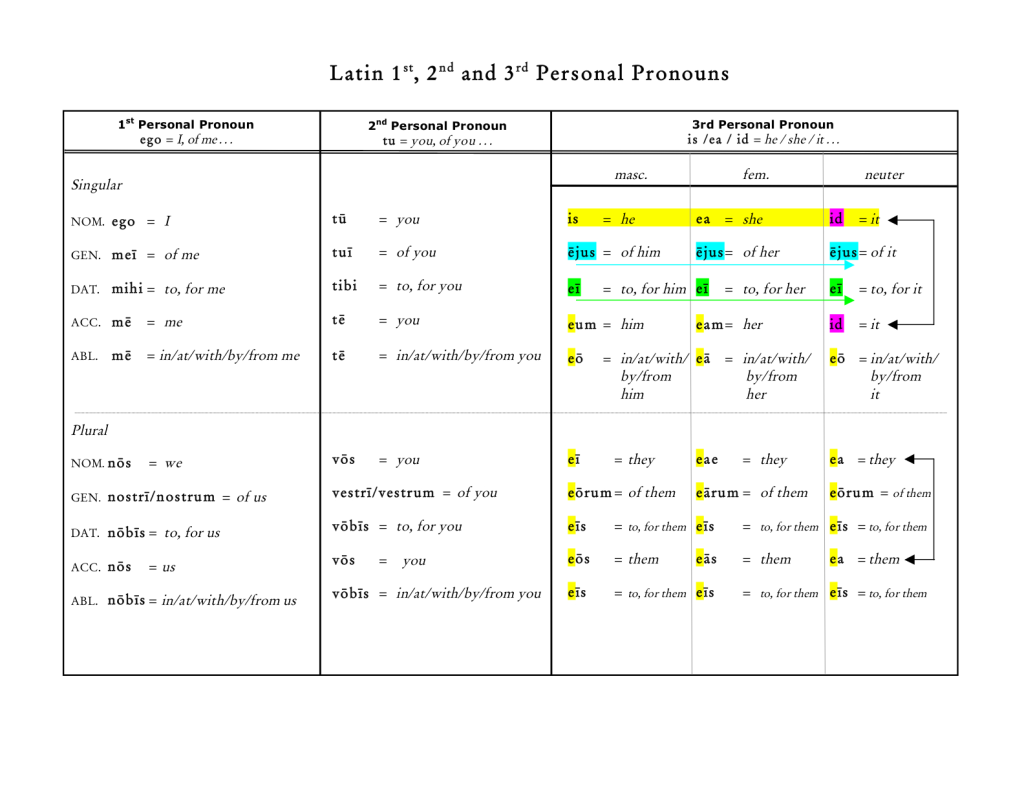As with all languages, there are a handful of verbs that, not being “active” (transitive) toward a “direct object” in their meanings and usage, they therefore fall into a category of verbs commonly known as “state of being” verbs, also referred to as “linking” or “intransitive” verbs. Also, in each of the languages I’ve studied (and surely in many more), the “to be” verb always falls into an “irregular” category of verb structures. The Latin verb sum = I am . . . is no exception. Not to worry though, because there are still patterns of “constants” that may be observed among the variables, making this irregular verb more manageable for memorization. So, let’s observe the chart of “The Six (6) tenses of the Latin Verb sum” (PDF also available from sidebar) followed by some comments (below)—
First, it is helpful to notice—via the aid of color—that all but one of the six tenses of sum utilize the same “personal endings” (with the frequent alternation of –o / –m in the 1st person singular). The Latin “Perfect” tense is the only tense revealing a unique grouping of verb endings (i.e.— ī, isti, it, imus, istis, ērunt). Meanwhile, it stays easy. The “Imperfect,” being a past time tense, conveniently throws us back into that former “era” (verb stem) when things were quite different. Put the personal endings on, and it’s a done deal! Similarly with the “Future” tense, with a verb stem “eri,” which shows all through the conjugation except in the 1st person singular where, like Jonah inside the whale, the “i” gets swallowed up by the “o” ending. It’s there (like Jonah); you just can’t see it (him)!
On to the “Perfect system,” which includes all three: the “Perfect,” the “Pluperfect” and the “Future Perfect”—all noticeably formed off the third principal part of this verb . . . Let’s see . . . uh . . . that would be . . . uh . . . Oh, “phooey!” — I can never remember it! Wait! That’s it! The third principal part isfuī (pronounced “foo-ee”). So then, the stem used is simply:fu-. As noted about, the “Perfect” adds to this stem the uniquely used endings: ī, isti, it, imus, istis, ērunt, leaving you with two clues or “flags” to tell you what tense it is. And finally, utilizing the same fu- stem, the “Pluperfect” and the “Future Perfect” simply add on the “Imperfect” conjugation of sum: eram . . . and the “Future” conjugation of sum: ero . . . , respectively.
So, observe; use discernment; think logically; look for structural patterns and consistencies. If you do, the irregularities of this “irregular” verb will seem less ominous to you.

